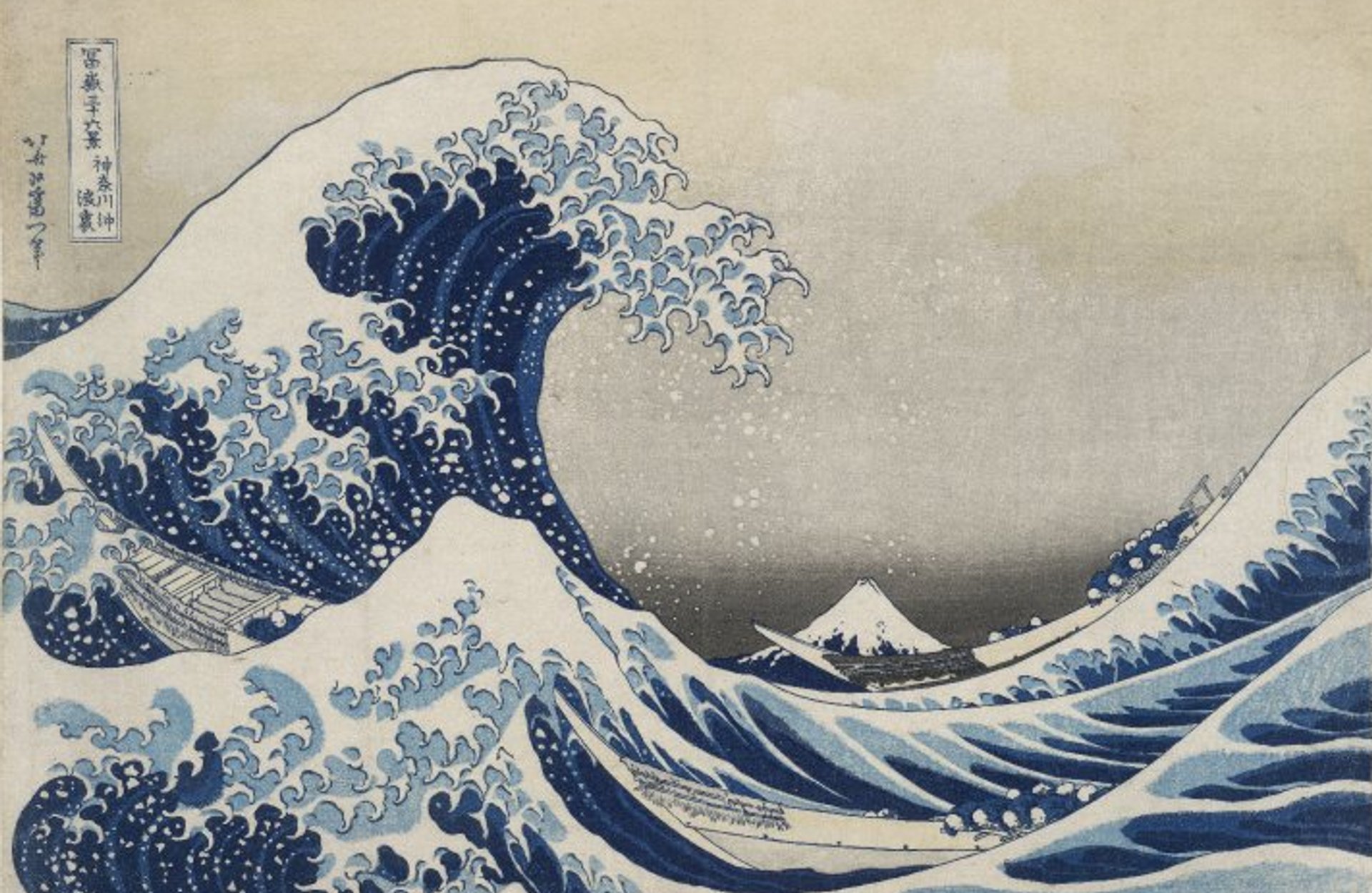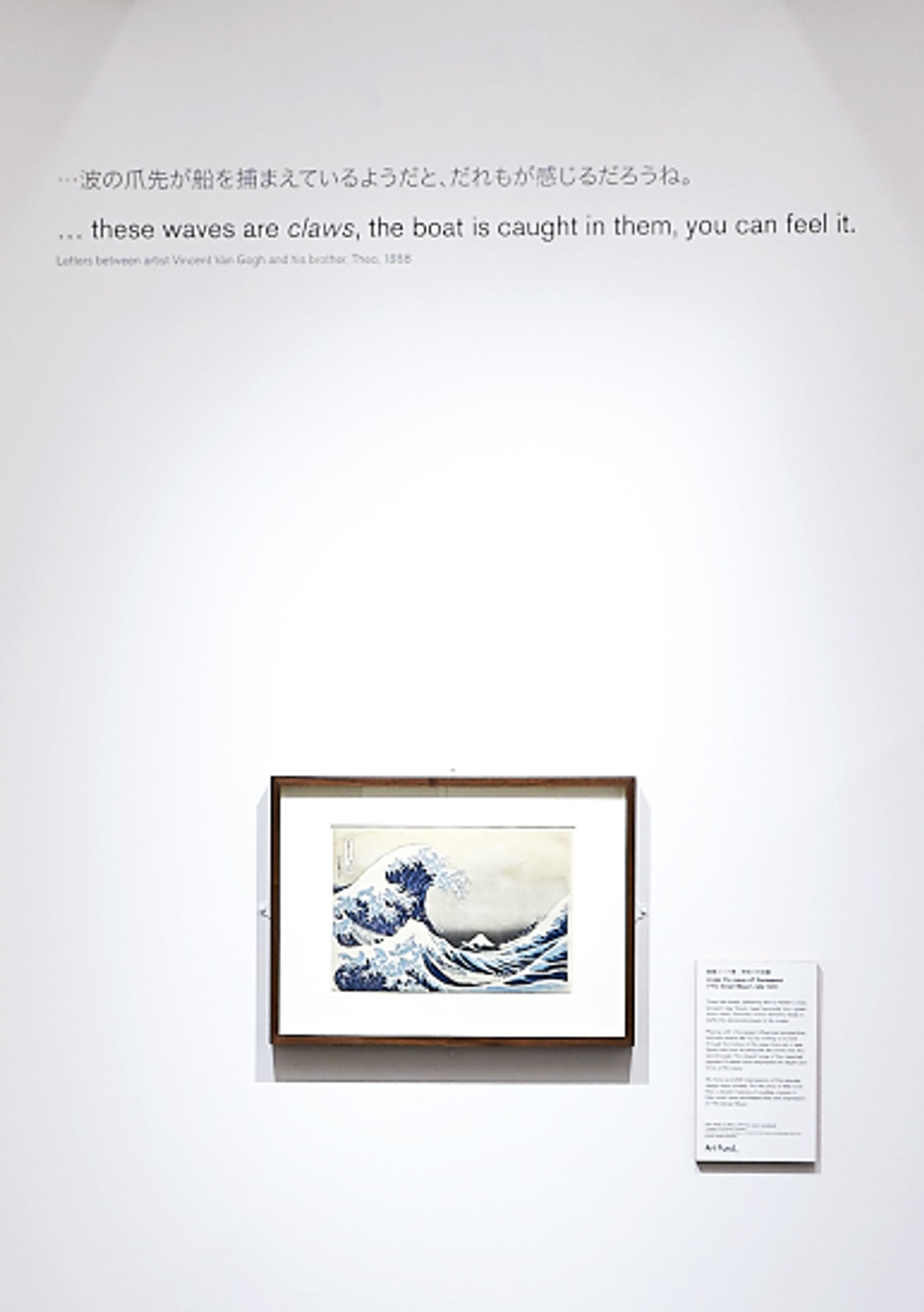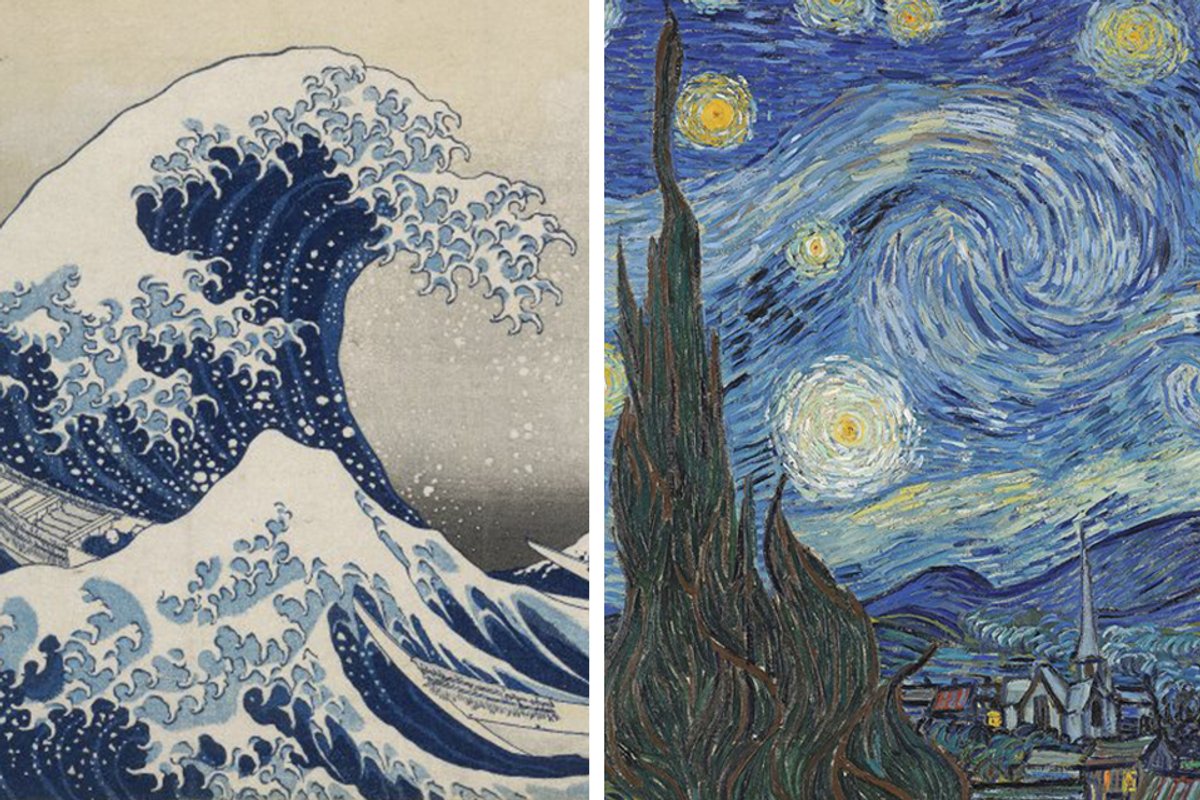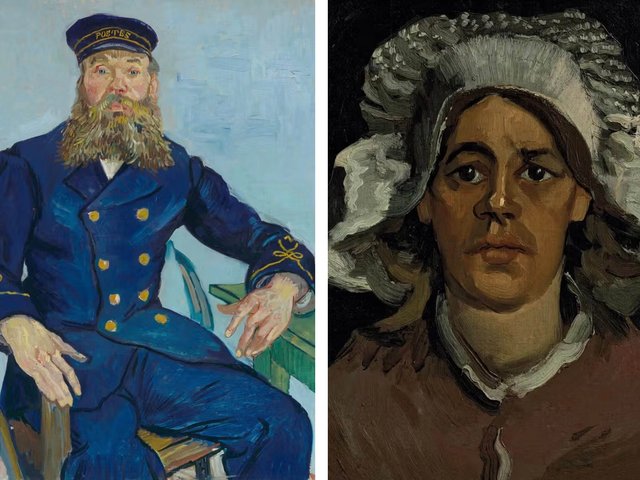Was Van Gogh inspired by Hokusai’s The Great Wave when he painted his Starry Night? The link between these two masterpieces of 19th-century art does not seem to have been made before. But Vincent was a great admirer of this Japanese print, writing vividly to his brother Theo: Hokusai’s "waves are claws, the boat is caught in them, you can feel it".
In the Hokusai print, the wave towers over the volcanic peak of Mount Fuji, whereas in Van Gogh’s painting the swirling mass in the sky hurtles towards the more gentle slopes of Les Alpilles, the hills which lie just behind the asylum of Saint-Paul-de-Mausole, where he was then staying. Through the bars of his cell, the Dutchman would frequently look out towards Les Alpilles and gaze up into the night sky.
Tumbling across the centre of Van Gogh’s sky is the Starry Night painting’s most extraordinary feature—a whorl of flickering brushstrokes that roll across the canvas, imparting a strong sensation of movement to the scene. Vincent could well have been thinking of the sea and he had visited the Mediterranean a few weeks before he wrote the letter about The Great Wave. The two works also share a similar colouring of rich blues.

Van Gogh, Starry Night, June 1889, Museum of Modern Art, New York Courtesy of the Museum of Modern Art, New York, USA / Bridgeman Images
Van Gogh, I suggest, was loosely inspired by The Great Wave and it was in his mind when he painted Starry Night. Of course, Starry Night is a product of the artist’s unbridled imagination, sparked off by the Provençal landscape and, most importantly, the hours that he would spend looking up at the heavens. But it is highly likely that the influences also included The Great Wave, created just over 50 years earlier on the other side of the globe.
Admirer
Vincent had written to Theo about The Great Wave on 8 September 1888, while he was living in the Yellow House in Arles. Although Vincent did not have a copy of the print with him in Provence, he remembered it well, so it must have made a considerable impact when he had seen it some months earlier in Paris. Theo responded to Vincent's letter two weeks later by sending a package of Japanese prints, which could well have included The Great Wave.
Although over 500 of Van Gogh’s Japanese prints survive today, The Great Wave is not among them. However, years later it became one of the most valuable of all Japanese prints, so it might have been given away or sold by the artist’s family in the first half of the 20th century.

Katsushika Hokusai, The Great Wave, about 1831 © the Trustees of the British Museum
Van Gogh, who loved Japanese prints, was among the earliest Modern painters to be recorded as admiring The Great Wave. Both Claude Monet and Henri Rivière both owned copies (now at the Fondation Claude Monet in Giverny and the Bibliothèque Nationale de France in Paris), but these artists probably acquired them slightly later, in the 1890s.
Gauguin, who stayed with Van Gogh for two months in the Yellow House in the autumn of 1888, also loved the work of Hokusai, although he is not recorded as ever owning or mentioning The Great Wave. But some of Gauguin’s plunging Brittany seascapes of 1888 are highly reminiscent of The Great Wave.
Van Gogh’s interest in The Great Wave is well known to specialists on the artist, but not so widely by experts on Japan. When Tim Clark was curating last year’s British Museum exhibition on Hokusai: Beyond The Great Wave, I mentioned Van Gogh’s letter. As a result, Clark emblazoned the quote about the claws on the wall above the museum’s superb copy of the print, which was the centrepiece of his highly successful show. Although The Great Wave was beginning to be appreciated by the avant-garde in Van Gogh’s time, it has since become the most famous work of Japanese art.

The Great Wave, with the Van Gogh quote, at the British Museum’s Hokusai exhibition, 2017 © Trustees of the British Museum
Source: The Van Gogh quote is from Letter 676 (8 September 1888).
Martin Bailey will be speaking on the Hokusai-Van Gogh link at the Cheltenham Literary Festival on 5 October.







